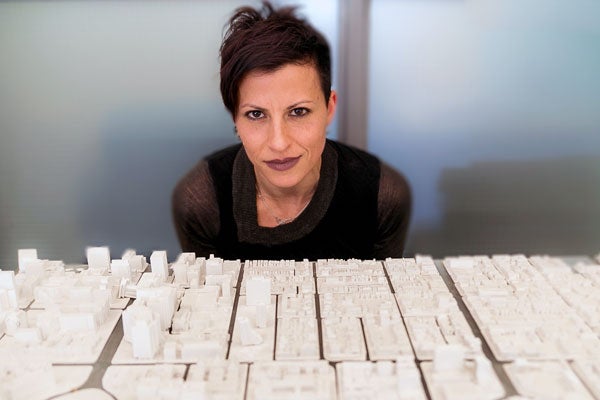
Urban geographer explores the changing face of suburbs
Published: January 14, 2015
Cities change over time and so do the residents who comprise them. Curious about how Toronto is growing, the role of inner suburbs, and the importance of social infrastructure, malls and public spaces?
Meet U of T's Deborah Cowen.
“My research asks why our cities are becoming so deeply polarized along racial and class lines, and what this means for our collective future,” says Cowen, an associate professor with U of T’s geography department. She’s especially interested in the way policing and securing areas are becoming the main approaches cities use to manage social and spatial divisions.
Writer Dominic Ali spoke with Cowen about her work and why it’s important for leaders to consider the roles of race and social class in city-building.
How did you first become interested in researching suburbs?
I became interested about 15 years ago as I began to see the dramatic economic and racial polarization of our city. The inner suburbs, built in the period after the Second World War, were becoming increasingly racialized and poor, even as popular conceptions of these places still imagined them as middle-class bedroom communities.
If gentrification has become a dominant force shaping urban life in cities around the world, this thread of my work has been concerned with the other side of this process; the peoples and spaces displaced by gentrification and the strategies emerging to govern these populations and territories. My interest in these issues began very locally, but I have since seen these same dynamics underway in many cities around the world.
How will your work contribute to the field and to cities like Toronto?
My work argues that we need a frank discussion about race, economic well-being and urban space. Ryerson University's Grace-Edward Galabuzi characterizes the situation as one of economic apartheid. Without serious change in political will and priorities, this will only get worse. The inner suburbs are radically underserviced in almost every regard – in terms of rapid public transit, public space, accessible food, medical and social services. The exception to this rule is policing. Inner suburbs – and especially people of colour who live in these areas – are often subject to aggressive, ‘targeted’ policing.
I contribute to public debates about the future of cities in a variety of ways. One of the most important is through my partnership with the National Film Board’s HIGHRISE project, which explores vertical suburbanization globally. This year, we are completing work on a partnership development grant funded through the Social Science and Humanities Research Council of Canada that examines the ways that digital technologies implicate everyday life in global suburbs.
How are suburbs changing in the 21st century?
Over the last three decades, the social and economic geography of many North American cities has been dramatically recast. Older suburbs, built largely in the 1950s and 1960s for middle-income nuclear families are today seeing wholesale changes.
Initially planned and built with a minimum of public spaces and services because of the assumption that residents would rely on themselves and their cars, these areas are today intensely urbanized but without adequate urban infrastructure. They have high density, diversity and a large population that relies on public infrastructure. The obvious issue is transit, but the other is the lack of space in the inner suburbs.
This is especially ironic because we think there’s lots of space in the suburbs, but there aren’t a lot of spaces where people can meet or where community services can be delivered.
Despite these challenges, the suburbs are also becoming really exciting places as they are transformed. While the downtown still holds appeal for some people, the diversity of peoples, foods, stores, cultures and spaces that once attracted people to live there has largely been displaced to the suburbs.
Can you tell us something from your research that readers might not know?
Our inner cities are becoming very high-priced and homogenous. It is increasingly difficult for most people – and especially racialized people – to live downtown.
People are often stigmatized based on where they live and yet, in a circular fashion, those same places are often stigmatized based on who lives there. Racism and class bias are powerful forces in shaping our perceptions of urban space.



